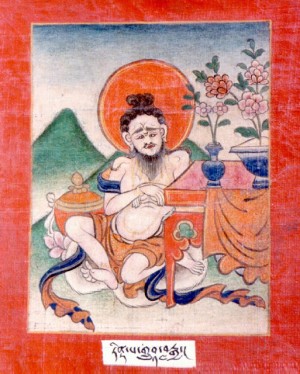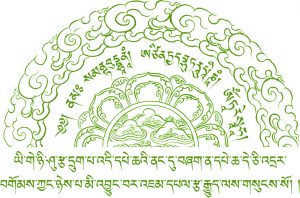There was once a fine weaver who lived in Sendhonagar. He worked very hard and managed to build a prosperous trade, a skill he later imparted to his many sons that brought greater wealth to the family. As time passed, at the age of 89, the old man’s wife passed away. Deeply sadden from his lost, he aged swiftly and became senile, unable to care for himself. His daughters-in-law began looking after him for quite some time, however, the constantly complain and eventually banished him from the household into a grass hut out in the garden which they built for the old man. Although they continued to care for the old man’s basic needs, he grew bitter and angry.
One day, the guru Jalandhara passed through Sendhonaga and among those he approached for food was the weaver’s eldest son. The family invited the holy man and treated him well, but when invited to stay the night, Jalandhara refused, saying that it was not his custom to sleep on comfortable beds indoors. Jalandhara then went out to the garden, and as he was about to fall a sleep, he heard an old voice speaking to itself. A conversation started and soon, Jalandhara spotted the hut and at the old man’s invitation he entered the hut, sat down, and listened to the old man’s tale of woe on how hollow life’s promises are.
The guru thought for a moment and replied, “everything we make or do is but a passing show. Everything that enters into existence enters into suffering. Everything is hollow illusion. Only in nirvana can peace and happiness be found. Would you like me to give you the instruction that prepares one for death?” With a firm and sure voice, the old man replied “Yes. The guru then initiated him into the mandala of Hevajra, and thought him how to meditate.
For the next 12 years, he practiced diligently. During this time, he attained certain powers but it remained secret until one day, during a family celebration, the wife of his eldest son went to his hut to send the old man a platter of food. When she entered the hut, she was the old man suffused in a lamp-like radiance, sitting in a circle of fifteen beautiful girls, each feeding the weaver of the most sumptuous food. By morning, the entire city heard of the amazing tale and people came to stare, some even prostrated themselves before the hut.
When the weaver emerged from his hut, he was no longer a senile old man, but had transformed into a 16 year old boy, radiating such magnificent bright like, and a body that was like a highly polished mirror. He came to be known as the guru Tantipa, for numerous years he spent it on selfless acts and later assumed into the Paradise of the Dakinis.
em
Busque no site
Busca por Assunto
Artigos Recentes

Tsampa
Tsampa ou tsamba (em tibetano: རྩམ་པ་; Wylie: rtsam pa; em …Leia Mais »
Mantra de Porta
“Om Padmo Ushnisha Vimale Hung Phat”, neste formato, na caligrafia …Leia Mais »
Lama Dance
Dança da Máscaras, ou Lama Dance (dança dos Lamas), são …Leia Mais »
Dungkar
A concha sagrada – símbolo da proclamação destemida dos ensinamentos …Leia Mais »
Thangka
Pinturas tradicionais tibetanas que representam deidades, ensinamentos e imagens abençoadas. …Leia Mais »



 Cintamani - Meditação e Arte - Copyright 2020 - Todos os direitos reservados.
Cintamani - Meditação e Arte - Copyright 2020 - Todos os direitos reservados.